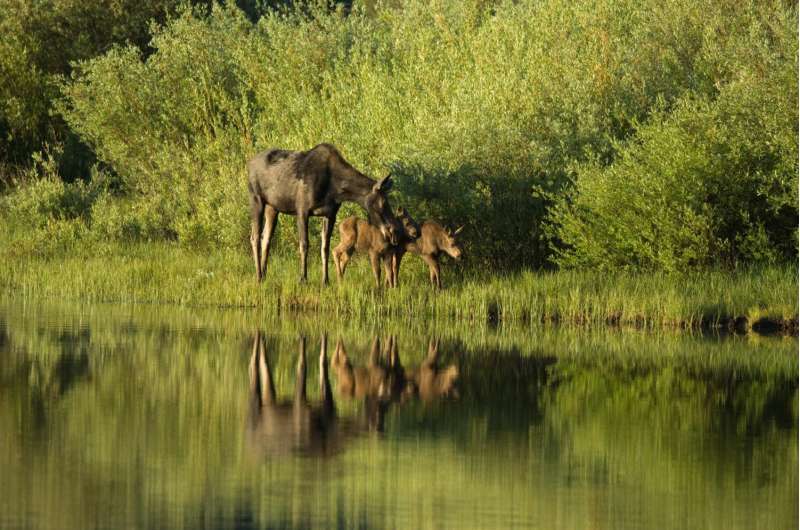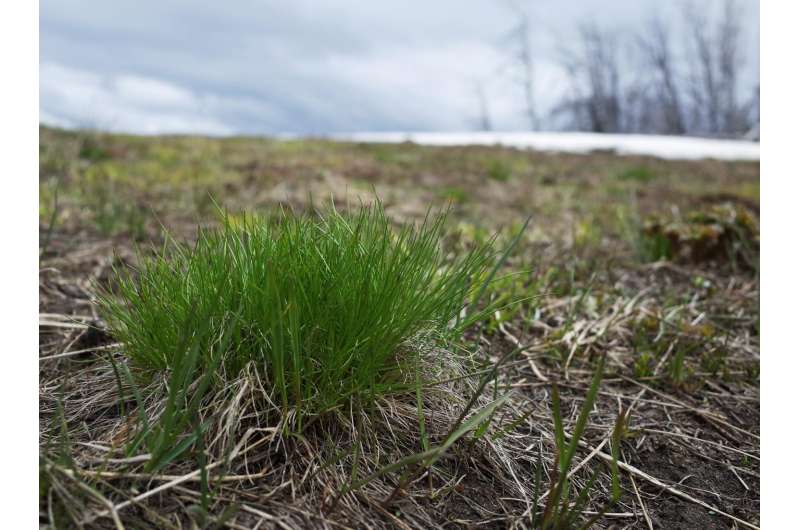New research details how big game follow spring green-up

Most big-game animals in Wyoming and the West can assess the quality of vegetation during the spring green-up to select the best patches of habitat during the growing season, a team of researchers led by University of Wyoming and U.S. Geological Survey scientists has documented.
While biologists long have thought that animals essentially "surf the green wave" of new plant growth from low-elevation winter range to high-elevation summer range, the new research has measured how precisely the animal movements are aligned with the green-up. The findings are reported in a paper published today in the scientific journal Proceedings of the Royal Society B.
"The importance of timing, and how animals match their movements to their habitat, is the key finding of our study," says Matt Kauffman, director of the Wyoming Migration Initiative, UW professor and U.S. Geological Survey (USGS) scientist. "This will help us understand how animals track plant growth as it is altered by climate change and ecological drought, and provide insights into how human disturbance can alter the ability of big game to track green waves of forage where and when they need to."
The researchers gathered movement data from 10 populations of five species—bighorn sheep, mule deer, elk, moose and bison—in western Wyoming and eastern Utah. Using remote-sensing technology, they matched those movements with the green-up of vegetation—specifically, the growth of high-quality forage in its early stages, when it has the highest nutritional value (low in fiber and high in protein).
Accounting for variables that typically influence habitat selection for each species, the scientists found that seven of the 10 populations selected patches of vegetation in the early-growth stage.

"Some of these animals do a good job of surfing the crest of the green wave, while others appear to favor the leading or trailing edge of the green wave," says Jerod Merkle, lead author and postdoctoral researcher in the USGS Wyoming Cooperative Fish and Wildlife Research Unit at UW. "Our research should pave the way for significant advancements in understanding how animals are connected to—and influenced by—the quality of forage available to them."
Insights gained from similar research projects could alert managers to when animal movements are threatened by climate or land-use changes, the researchers say. If a decrease in "green wave surfing" is observed, managers could enhance certain springtime habitats, or make high-quality forage more accessible to big game.
"(This information) will prove useful for quantifying the loss in forage availability—because of climate change or land development—that animals might experience in the future," the researchers wrote.
More information: Large herbivores surf waves of green-up during spring, Proceedings of the Royal Society B, rspb.royalsocietypublishing.or … .1098/rspb.2016.0456
Journal information: Proceedings of the Royal Society B
Provided by University of Wyoming



















